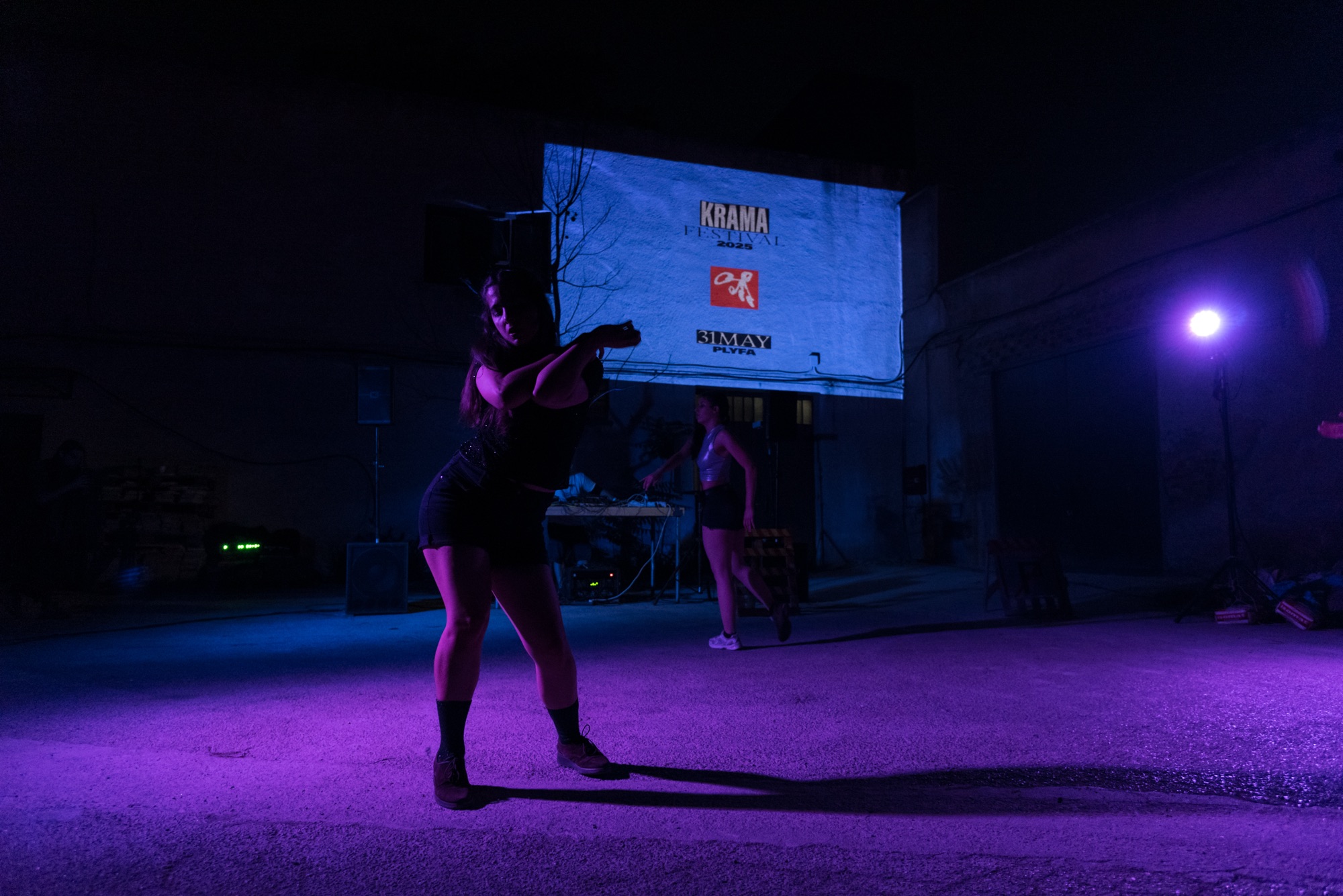Words by Isabela Palancean.
Marking my first time visiting the birthplace of drama and feta cheese (according to a giant LIDL advert inside the city’s airport), I attended KRAMA Festival – a cross-disciplinary platform connecting sound, performance and visual artists working at the edge of mainstream culture.
This year’s line-up featured a standout collaboration between Athens-based dance collective DOS Space and METAMAN, a DJ and sound artist known for his immersive analogue synthesiser sets.
The site-specific performance took place at PLYFA, a former textile factory in Athens repurposed as an artistic platform for collaboration, exchange, and experimentation.
PLYFA’s raw, open-air architecture became a living part of the piece – a physical and sonic landscape shaped by movement, sound, and texture.
Being in such proximity to the performers intensified the experience: I could hear – if not physically feel – the abrasive texture of the ground beneath each landing, each transfer. Sand and pebbles scratched audibly against skin and fabric, grounding the choreography in an elemental, almost confrontational physicality.
METAMAN’s expansive score, drawing on themes of urban routinism – alienation, repetition, and spatial constraint – mirrored this tension, providing both resistance and momentum. While using the alien qualities of modular synths, METAMAN’s sound encouraged the body to deviate from automation, creating space for discovery through discomfort. This was echoed in the dancers’ fluid yet laboured motion – as if pushing against rigidity, searching for new states.
Their slightly off-balance, unmoored sequences brought to mind free electrons shifting through a magnetic field – erratic yet charged, forming fleetingly recognisable patterns, only to collapse again later. This dynamic instability created a space of indeterminacy, where meaning remained constantly in flux.
The performance consisted of two parts, separated by a brief interval. In a fitting gesture of disruption, the dancers emerged from within the audience, dissolving the boundary between observer and performer.
Although the first part was performed by a trio, each performer brought their own kinetic vocabulary, rhythm and sensibility to the stage. From the sensual to the fragmented, this added a distinctly personal touch to the piece, resisting the expectation to perform in a prescribed, linear way. The dancers’ exercise in unbinding was underscored by the friction between mechanical breaks and moments of flow – a physical echo of METAMAN’s modular sound structures.
Rather than matching beats or cues, the dancers moved in and out of sync with the music, embracing misalignment, non-linearity, and asynchronicity. This choreographic strategy invited the audience to sit with dissonance and uncertainty, gesturing toward notions of rave – a temporarily created reality that enables participants to shed socially constructed group and self-identities by moving past initial disorientation or discomfort.
The second half, featuring a solo by Christina Karapazou, founder and artistic director of DOS, expanded on the spatial and organic motifs introduced earlier. Here, spiralling arms, wave-like gestures, and level changes destabilised the angular and geometric phrasing seen elsewhere.
Karapazou’s use of staccato suggested an attempt at communicating between the human and non-human – a search for a shared frequency between the natural and the artificial. The body became both receiver and transmitter, navigating interference, static, and unexpected signals with both vulnerability and strength.
Between movement and sound, discomfort and transcendence, the performance created a temporary zone of possibility. Situated at the intersection of ritual, experiment and live art, the piece, as well as the festival more broadly, invited both performers and audience to question structure, challenge expectation, and momentarily inhabit a space of shared unknowing and creative potential.
